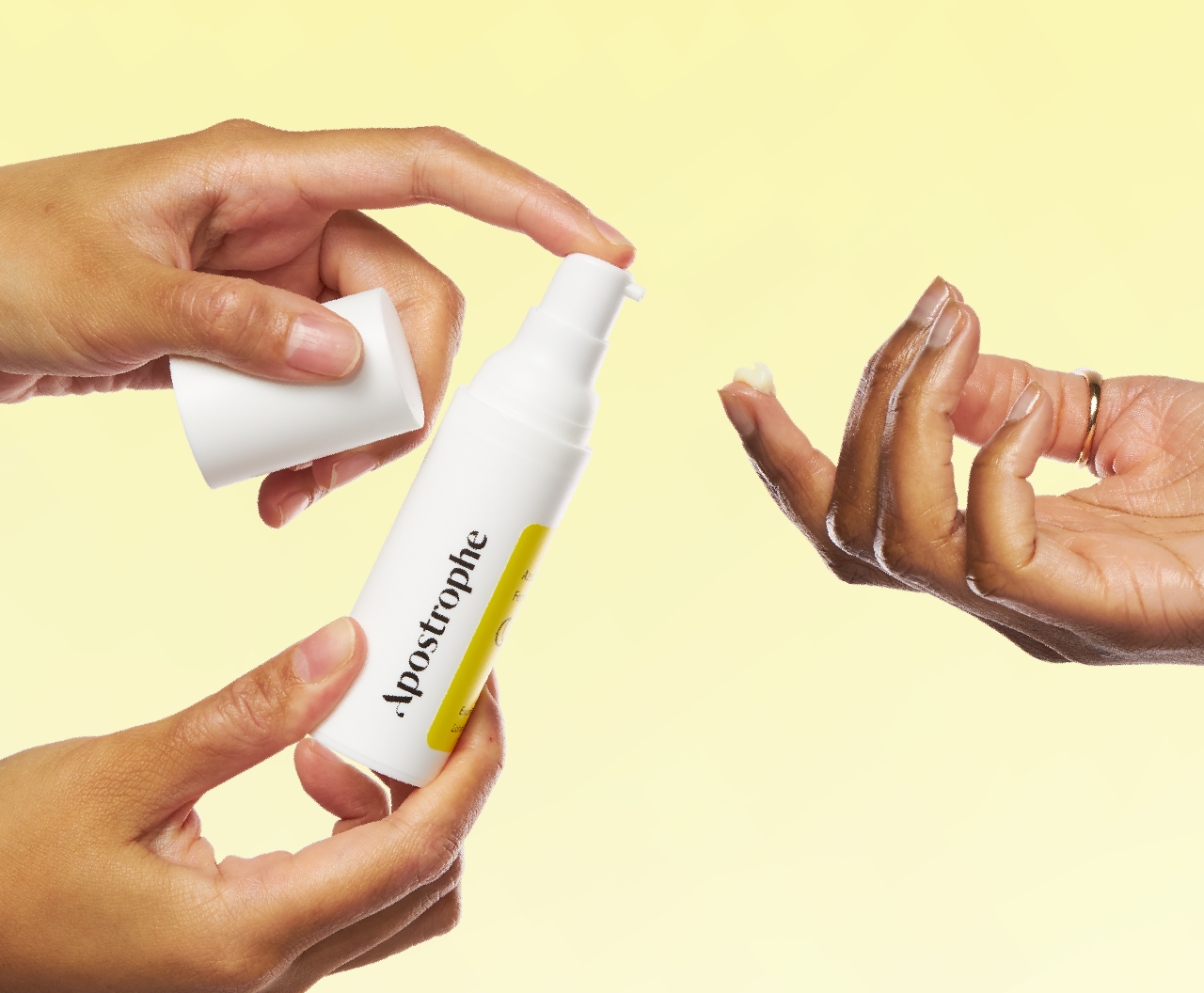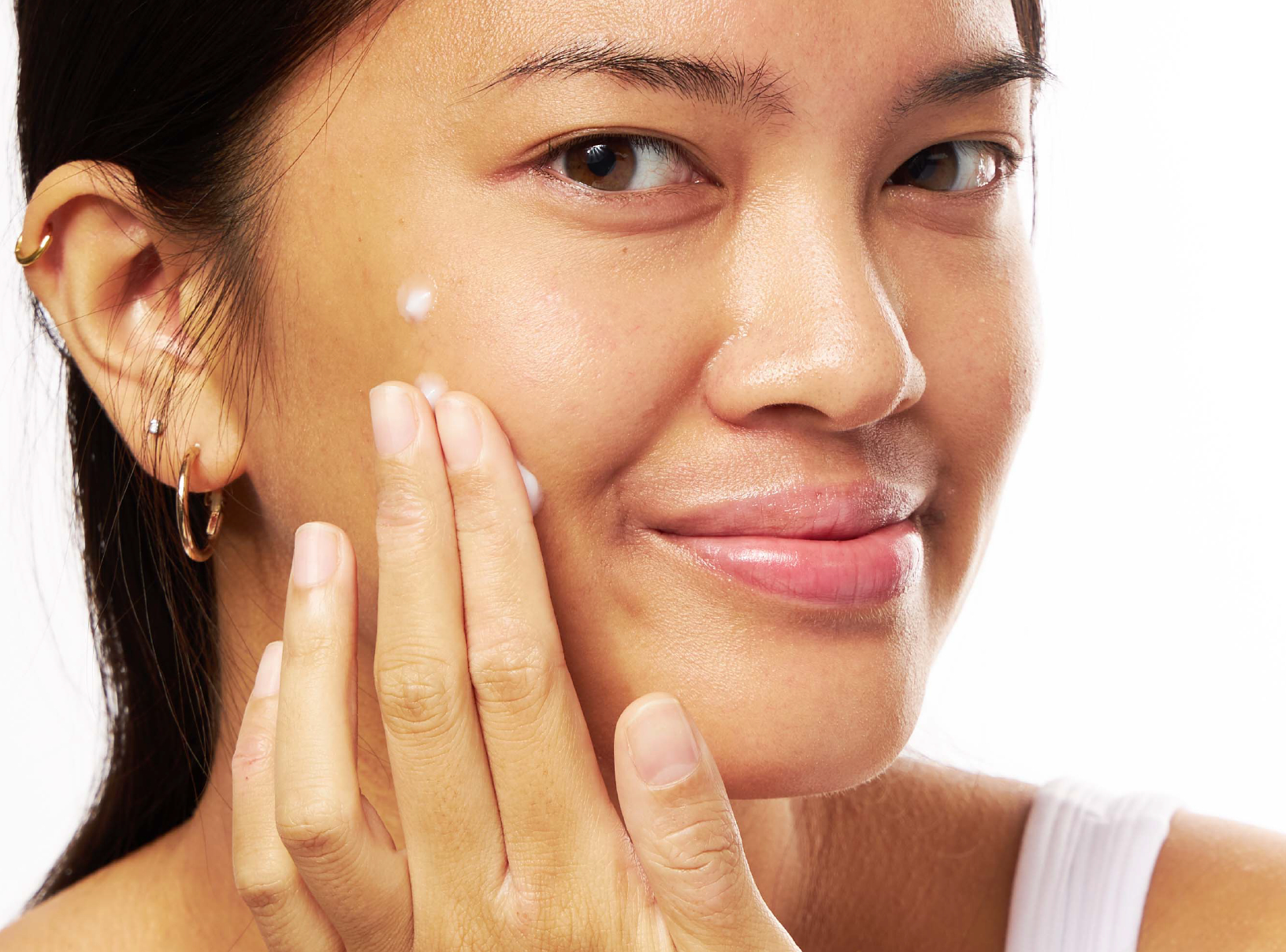Education
Is Tretinoin Over The Counter?


SHARE
Education
Is Tretinoin Over The Counter?
Medically reviewed by Aimee Paik, MD
Written by Apostrophe Team
Last updated 4/5/2024
If you’ve spent some time searching around on the internet for acne remedies, you’ve probably noticed the term “tretinoin” popping up everywhere you look - for good reason.
This topical cream is considered by many derms to be a mainstay first-line treatment in the fight against acne and signs of aging.
But before you go running out to your local pharmacy’s skin care aisle, you should know there’s a little more to it than that.
Today, we’re looking at whether or not tretinoin is sold over the counter, and how you can go about getting your hands on some.
What is tretinoin?
Tretinoin is a topical retinoid, which is a class of medications known to treat acne by increasing your body’s skin cell turnover rate. These topical medications can also help with inflammation.
Acne isn’t the only thing that topical retinoids treat. They’re sometimes used to address sun damage or photo-aging.
Retinoids like tretinoin are also sometimes recommended because of their anti-aging benefits - they help with the appearance of wrinkles, fine lines, and dark spots.
The most important detail here is that tretinoin really works. When used topically, tretinoin can help mitigate the effects of inflammatory and non-inflammatory acne lesions, help unclog pores, and even reduce the appearance of acne scars.
Tretinoin can also be combined with other acne treatments (like oral antibiotics like doxycyline or even a topical antibiotic) to increase its effectiveness.
What causes acne
Acne pops up if sebum and dead skin cells build up and mix together, blocking pores and hair follicles.
Let’s start with dead skin cells. Your body sheds them every 40 to 56 days as a way of renewing and replacing your skin.
Sounds a little icky, but it’s an important piece of the puzzle in keeping your skin looking fresh and healthy.
Then, there’s sebum. It’s produced by your sebaceous glands and its job is to lubricate your skin and hair, as well as create a barrier on your skin to guard it against bacteria and other things in the environment that can damage it.
Some sebum is good. But if your body produces too much of it, it can be bad news.
Wondering what can increase your sebum production? Hormonal imbalances certainly can - especially the ones that occur during your period. Oily, acne-prone skin can be genetic, too.
And, believe it or not, washing your face can also contribute to excessive sebum production. If you keep washing away your body’s natural oils, it may ramp up production in order to compensate.
Regardless, once that excess sebum mixes with dead skin cells and finds its way into your teeny tiny pores, acne is generally the result. Add some bacteria to the mix, and you have the perfect recipe for things like moderate acne, severe acne, and cystic acne.
Can tretinoin be purchased over the counter?
Bad news, y’all. You can’t purchase tretinoin over the counter - it’s one of a few prescription retinoids on the market and getting your hands on some requires a visit with a board-certified dermatologist or other healthcare provider.
Over-the-counter products tend to contain milder ingredients that have a lesser impact on your skin. Tretinoin isn’t considered mild and is a powerful active ingredient.
Because of how potent tretinoin can be, it’s known to have some side effects - especially during the first few weeks of use, as your skin gets used to the medication.
Common side effects include skin irritation, dry skin, redness, and more.
Your dermatology provider will provide guidance on minimizing skin irritation.
If you notice any of these side effects, you should contact a board-certified dermatologist or healthcare provider as a precaution.
How to use tretinoin
Using tretinoin is pretty simple:
🌜It’s generally best to apply tretinoin right before bed, as the medication can make your skin more sensitive to sunlight.
✋ Since you’ll be applying tretinoin with your fingers, start by washing your hands. After that, use your clean hands to wash your face with a mild soap.
🧖♀️ Next, gently pat your skin dry, apply your preferred moisturizer, and then apply tretinoin to the affected area.
When you first start using tretinoin, it may make your acne worse before it gets better - especially during the first few weeks of use. You should notice an improvement in your acne after a few weeks.
And it should go without saying, but make sure you’re following the prescribing instructions of your dermatology provider when pursuing this treatment of acne.
If you want to make any tweaks or if you’re noticing some undesirable side effects, it’s always safest to reach out to them and talk about your options instead of making up your own rules.
How to get tretinoin
So you can’t just walk into the store and buy tretinoin. It’s a minor setback, but certainly not the end of the world.
To find out if tretinoin can help address your acne, all you need to do is start a consultation with a board-certified dermatologist or healthcare provider.
They’ll look at your specific case of acne and determine if tretinoin is the best prescription acne medication for you.
If it’s not, they’ll be able to offer medical advice and recommend other acne treatment options - which could include another topical treatment or prescription medication.
If that doesn’t sound ideal or you don’t want to dive deep into the prescription-strength stuff, tretinoin’s less severe (but also less effective) sibling, retinol, is found in many over-the-counter creams, gels, and solutions.
But if you’re looking for the real deal, you’ll have to talk to the experts.
Sources:
Tretinoin Topical. Medline Plus. Retrieved from https://medlineplus.gov/druginfo/meds/a682437.html
Makrantonaki, E, Ganceviciene, Zouboulis, C (2011, Jan-March). An update on the role of the sebaceous gland in the pathogenesis of acne. Dermato Endocrinology. 3(1), 41-49. Retrieved from https://www.ncbi.nlm.nih.gov/pmc/articles/PMC3051853/
Acne (2012). Retrieved from https://www.womenshealth.gov/a-z-topics/acne
Physiology, Sebaceous Glands, (2021). Stat Pearls. Retrieved from https://www.ncbi.nlm.nih.gov/books/NBK499819/
Koster, M.I. (2009, July). Making an epidermis. Annals of the New York Academy of Sciences. 1170, 7-10. Retrieved from https://www.ncbi.nlm.nih.gov/pmc/articles/PMC2861991/
Khemani, U., Khopkar, U., Nayak. C., (2016). A comparison study of the clinical efficacy and safety of topical adapalene gel (0.1%) and tretinoin cream (0.025%) in the treatment of acne vulgaris. International Journal of Basic and Clinical Pharmacology. Retrieved from https://www.ijbcp.com/index.php/ijbcp/article/view/311
Tretinoin Topical. Medline Plus. Retrieved from https://medlineplus.gov/druginfo/meds/a682437.html
Leyden, J., Stein-Gold, L., Weiss, J., (2017). Why Topical Retinoids Are Mainstay for Therapy for Acne. Dermatology and Therapy. Retrieved from https://www.ncbi.nlm.nih.gov/pmc/articles/PMC5574737/
Retinoids. American Osteopathic College of Dermatology. Retrieved from https://www.aocd.org/page/Retinoidstopical
Shop this post

Tretinoin
Like what you just read? Sign up for our email list to get the scoop on skincare science delivered straight to your inbox.

Deep Dives
A dermatologist shares his thoughts on the recent studies about benzoyl peroxide and benzene.
Read More
Education
What is milia?
What is milia? Today, we’re jumping into one type of bump that you may have heard about most commonly in infants — milia.
Read More
Education
Best moisturizer for acne-prone skin
If you have combination acne-prone skin, figuring out which moisturizer is best for your skin might be tough. In this guide, we break down the best moisturizer for combination, acne-prone skin.
Read More
